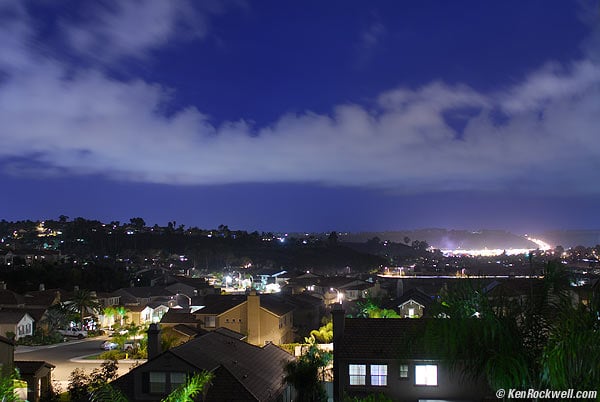Film vs. Digital About these reviews
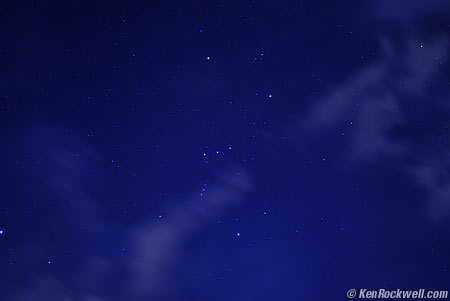
The Constellation
Orion by Moonlight.
D200, 28mm f/1.4 @ f/1.4, 10 seconds, ISO 100 (LV -2.3),
no NR.
I bought mine from Ritz here. I bought another D200 from Adorama here. Also try Amazon here. Adorama usually has D200/18-70 kits in stock here. It helps me keep adding to this site when you click these links to get yours.
See also my D200 Time Exposure page
General
This is a completely different topic than the noise and grain seen on my noise page.
My D200 is spectacular for ridiculously long night exposures.
Long exposure noise reduction (NR) lets the camera make a second identical exposure with the shutter closed. This lets the camera know exactly which pixels are hot and exactly how much fog (leakage) there is. The camera then subtracts the dark frame image from the shot you just made and saves the result. Engineers call this Dark Frame Subtraction.
Dark frame subtraction unfogs the image and eliminates hot (lit) pixels. It doesn't reduce the grain.
Even when set to ON it doesn't activate until exposures are 10s or longer. It does reduce the shot buffer from 25 to 11 JPGs regardless of shutter speed, so check this if your shot buffer just shrunk.
My D70 and D1H always fogged one edge very slightly purple from charge leakage if you made a 30 second exposure at ISO 1600. The Long Exposure NR setting would fix this, but takes as much longer again as the exposure time to correct.
Good news: My D200 has much less, if any, purple haze. I see no reason to use the Long Exposure NR even if you are photographing coal mines.
Long Exposure NR is a pain. The second dark exposure is as long as the main exposure. That means you have to wait an extra four minutes after making a four minute exposure if you set LONG EXP NR ON.
Further down I'm going to show you what happens in extreme examples of long exposures at high ISOs. Please note that only crazy people will ever do this. My shot of the stars above was made at LV -2.3, or six stops less than the first dark fog examples. I didn't bother with Long Exposure NR and left it OFF, its default. The last dark examples at four minutes are more ten stops more exposure than needed to shoot a landscape under the full moon.
California
Suburbs by Moonlight.
D200, 28mm f/1.4 @ f/2.8,
20 seconds, ISO 100 (LV-1.3),
no NR.
30 Second Exposures at High ISOs
30 seconds at ISO 1600 at f/1.4 is LV -8. This is seven stops more exposure than used in the moonlight shot above. I've never seen this purple haze in real photography. I only see it in test exposures of my lens cap. Therefore I never bother waiting for the Long Exposure NR and always keep it off, which is the default.
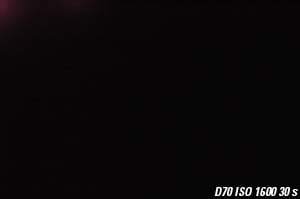 |
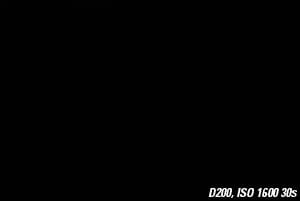 |
D70:
ISO 1600, 30 seconds. |
D200:
ISO 1600, 30 seconds. |
These are actual shots. Pretty boring! There is a very slight purple haze in the upper left of the D70 shot. The D200 looks better. Since you can't see anything here I'll lighten them both for you. I did this by dragging the right highlight slider in PhotoShop's Level tool from 255 all the way over to 32 for both images. This is equivalent to lightening these images by four stops, or LV -12. A few more stops would let you expose a barren landscape lit by nothing but starlight.
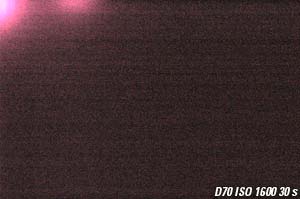 |
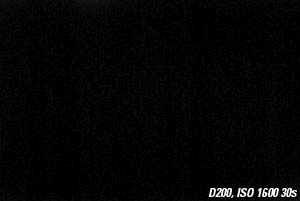 |
D70,
lightened four stops to ISO 25,600 |
D200,
lightened four stops to ISO 25,600 |
Clearly the D200 works great. It's as clear as the file number of my D200 file I show above: 5150. 5150 is the LAPD code for "insane," which is how I feel about wieners who spend their time making time exposures of lens caps. I can show the haze of the D70 making these time exposures of lens caps, but even the D70 is great for any real night photography. Noise is never an issue with either of these for me.
You'll often see a couple of hot pixels in the D200 at ISO 1600 or ISO 3200. These are easy to fix in Photoshop. The Long Exposure NR function also fixes them, but takes a lot more time waiting to complete for each shot.
Note that even at these levels it's only the D70 that shows any haze. The D200 is perfect.
Four Minute (256 second) Exposures at High ISOs
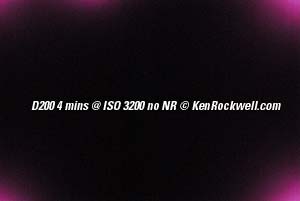 |
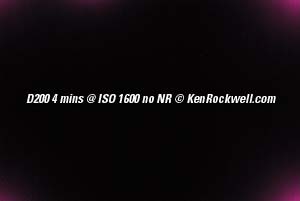 |
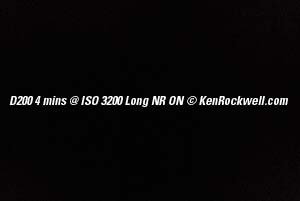 |
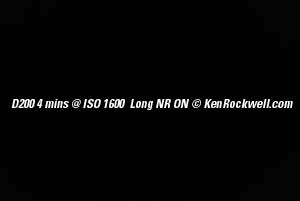 |
Aren't you all glad I spend my time making time exposures of lens caps for you?
These photos make it pretty plain to me that you can forget long exposure NR. You get fogging with four minute exposures at ISO 1600 and 3200, but at f/1.4 these correspond to to LV -11 and LV -12. If you're crazy enough to do this at least you can see what my D200 does.
There are some dim red sparkles (hot pixels) at 3200 and 1600 if you look at 100%. They go away completely with Long Exp NR ON.
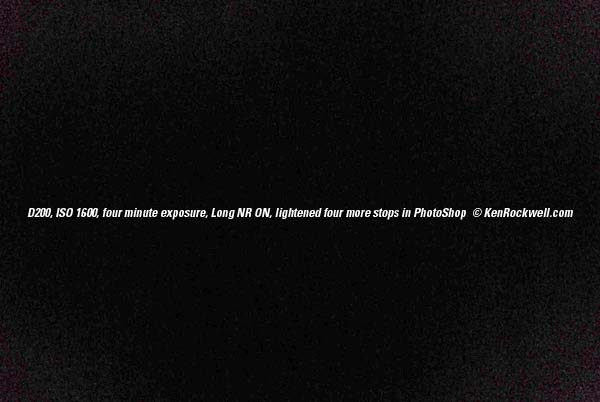
I lightened the four minutes at ISO 1600 long NR ON shot four stops. That makes this a four minute exposure at ISO 25,600! I did this by dragging the right highlight slider in PhotoShop's Level tool from 255 all the way over to 32. This is equivalent to LV -15 at f/1.4. This is enough exposure to make a landscape lit by nothing but starlight (no moon) look as bright as day. This looks pretty good to me! Remember these are just shots of the back of my lens cap.
Technical Note
A photographic minute is 64 seconds long. Four photographic minutes are 256 seconds, or 4:16 on the clock. This is because photographic time works in powers of two. For instance, 1/1,000 second is actually 1/1,024 if you get out your shutter timer.
back to D200 review page index
back to top of D200 review




